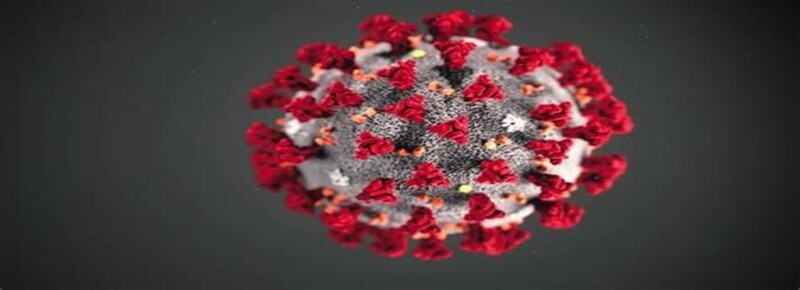Dr. Rohini Karandikar tells you all you need to know about COVID-19 variants and its implications on vaccine efficacy.
By Rohini Karandikar
When the SARS-CoV2 virus was recognized as a novel coronavirus by the World Health Organization, the world’s hope rested on vaccines. The infectivity of the virus which was several times higher than previous coronaviruses meant that only vaccines could mark the end of the pandemic.
Thanks to advances in science and technology which expedited genetic engineering for vaccine development, several vaccines became available for emergency use in less than a year into the pandemic.
This, however, turned out to be only half the battle won. A major challenge for scientists and the global community is the evolution of SARS-CoV-2 into multiple variants.
What will this mean for vaccine development? Dr. Rohini Karandikar, a science writer at JoVE tells you all you need to know about COVID-19 variants.
What are variants?
As viruses multiply, they also make copies of their genetic material. This copying is error-prone. Certain errors get passed on to the next generation of viruses and some of these errors or mutations cause significant changes in the virus and thus form new variants. Mutations are prevalent among viruses. A particular mutation may or may not significantly alter the proteins of a virus. In cases where it does, a new variant is likely to evolve. Some new variants emerge and disappear. At times, new variants become more transmissible and spread faster, can attach better to host cells, or can evade immunity.
How are mutants and variants named?
Mutations in the genetic sequence lead to changes in amino acids that make up the proteins of a virus. Each amino acid is like a lego brick and a specific arrangement of these ‘bricks’ forms a protein. Some key mutations lead to major changes in specific viral proteins.
For example, the mutant D614G that emerged in October 2020 had an amino acid D (Aspartic acid) at the 614th position from the original strain replaced by another amino acid G (Glycine). A bunch of mutations at different positions can lead to the formation of a variant. Thus, the mutation D614G is found in several variants.
The so-called “double mutant” (B.1.617) originated and is currently spreading in India and has more than two mutations. However, two key mutations- L452R and E484Q have led to significant changes in the receptor-binding domain (RBD) of the spike glycoprotein of the virus. The variants that are known today follow a particular naming system. e.g.B1.117, P1, etc. The alphabets in this system indicate the lineage, like the branches of a tree and the number indicates the descendant of that particular branch. Scientists strongly discourage the naming of the variants according to their geographical origin to avoid stigmatization.
Some of the SARS-CoV-2 variants show a potential to affect diagnosis, have a predicted increase in transmissibility and show reduced neutralization after vaccination. These variants are called variants of interest or (VOI). E.g., variants B.1.617, P2 are identified as VOIs. Some variants show clear evidence of major impact on diagnostic tests, high resistance to treatment, and significant reduction of neutralization by antibodies after vaccination or infection by a previous variant. Such variants are called Variants of Concern (VOC). The variants B.1.1.7, B 1.351, P1 have been identified as VOCs.
What is the efficacy of the already developed vaccines against variants?
As panic struck with the increased transmission of the B.1.617 variant in India and many other variants in other parts of the world, there were doubts on the efficacy of vaccines providing immunity against the variants. Preliminary studies have shown that both- Covaxin and Covishield offer protection against multiple variants of the SARS-CoV-2 including B.1.617. Pfizer’s RNA vaccine is also reported to protect against the B.1.351 variant and lowers the risk of severe infection.
What are scientists doing to study these variants and vaccine efficacy?
In order to track the evolution of variants, data on the genetic sequence of SARS-CoV-2 is being analyzed in genomic surveillance studies globally. In India, the Indian SARS-COV-2 Genomic Consortium (INSACOG) comprising 10 national laboratories is assessing different variants of SARS-CoV-2 for their genomic, epidemiological and clinical aspects. There is a need to ramp up these efforts in the light of the increased transmission and emergence of new variants within the country.
What is the way forward?
Thankfully, the SARS-CoV-2 has a proofreading mechanism that makes it less error-prone than other viruses such as the influenza virus or HIV. On the flip side, the longer a virus is allowed to spread, higher are the chances of variants it can produce. Variants can also emerge when a virus remains for a very long period within a patient with compromised immunity.
Given the scale at which new cases are increasing, new variants stand a high chance of appearance. Although the presently available vaccines show some protection against the new variants, vaccination alone is not enough. There is one method that can possibly nip the virus in the bud. That method is to follow COVID-appropriate behavior, including proper masking, staying indoors in well-ventilated rooms, avoiding crowds and hand hygiene. If this is followed in addition to increased vaccination, testing, tracing, treatment, etc. we might be on the track to catch up with the newer variants.



